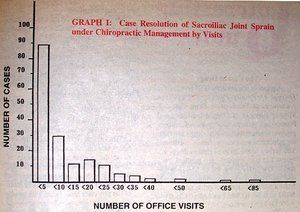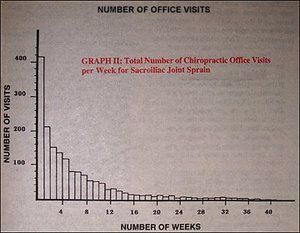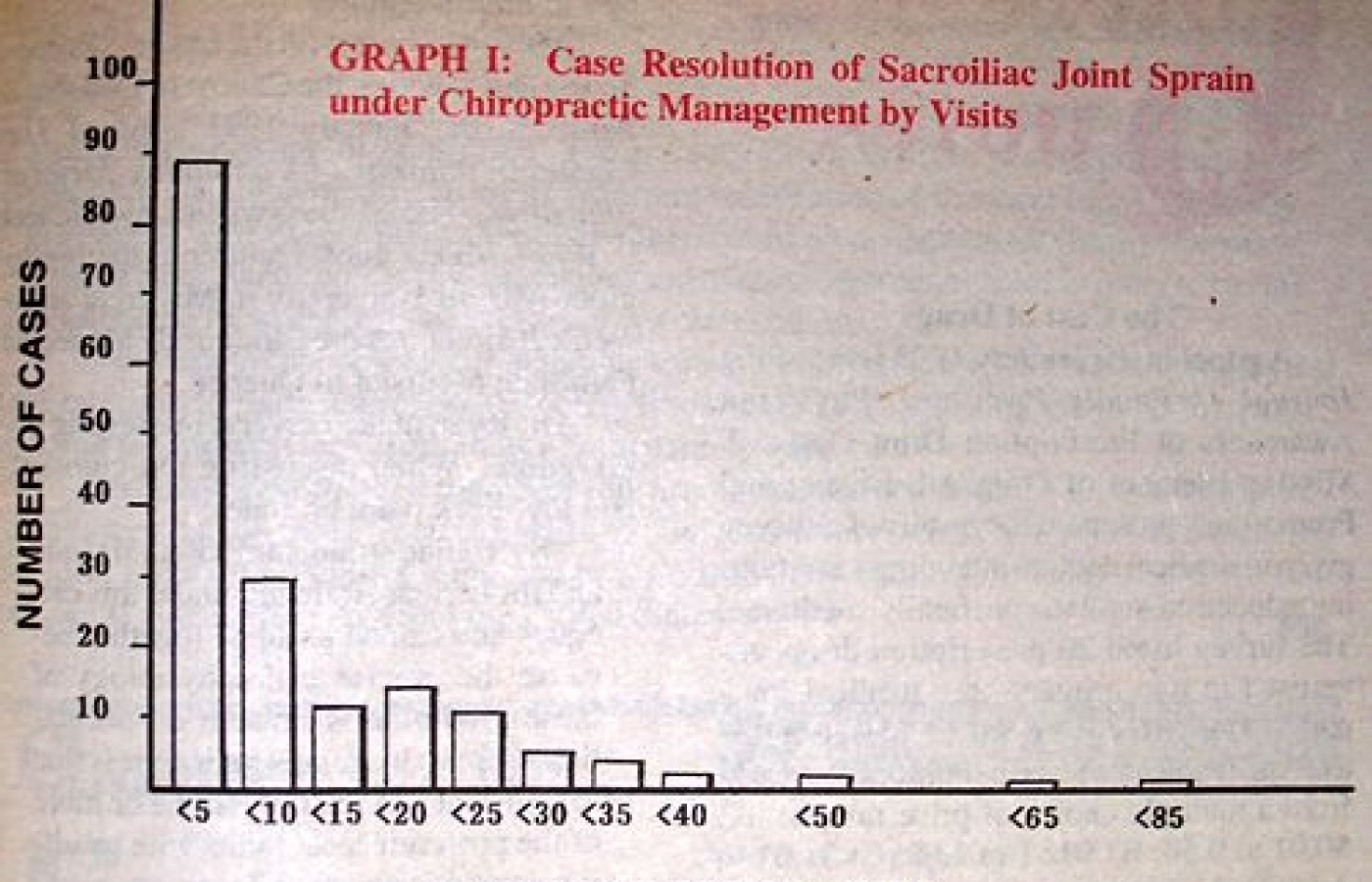Recent laws in New Jersey and California represent a disturbing trend that will negatively impact a practice’s ability to collect monies from patients, as well as expose them to significant penalties if the practice does not follow the mandatory guidelines to a T. Please be aware that a similar law may be coming to your state. The time to act is before the law is passed.
A Comparison of Chiropractic and Medical Costs for the Treatment of Sacroiliac Joint Sprain
Recently, the Texas Chiropractic Association and Texas Chiropractic College have acquired a computer data base consisting of over four million billing records concerning workers' compensation claims in Texas. This data base was obtained from a private financial consulting firm that collects claims data for big business. From this information, companies are able to calculate rates for various employee benefit packages.
As the claims data file includes records from all classes of health care providers involved in the Texas workers' compensation system, it provides an interdisciplinary comparative analysis of provider behavior and billing practices according to ICD-9 diagnostic codes.
The following is a comparative analysis of patients treated exclusively by chiropractic physicians versus those patients treated exclusively by medical physicians for sacroiliac joint sprains from January 1991 to the present. During this period, there were 170 exclusive chiropractic cases and 371 exclusive medical cases of sacroiliac joint sprain.
| Sacroiliac Joint Sprain: Medical Management | |
| Total number of cases: | 371 cases |
| Total amount billed | $424,697.00 |
| Total amount paid: | $339,092.00 |
| Case average based on paid claims: | $914.00 per case |
| Sacroiliac Joint Sprain: Chiropractic Management | |
| Total number of cases | 170 |
| cases Total amount billed: | $127,785.00 |
| Total amount paid: | $109,320.00 |
| Case average based on paid claims: | $643.00 per case |
Medical claims for sacroiliac joint sprain (averaging $914.00 per case) ran approximately 30 percent higher than chiropractic claims for the same diagnosis during the time period surveyed. It should be noted that in the Texas workers' compensation system, chiropractic physicians and medical physicians are on equal footing, a result of provisions of the 1989 Workers' Compensation Act. Thus, medical doctors and chiropractic physicians are entitled to the same levels of reimbursement for services based on CPT codes. Due to this equality, it is unlikely that differences in levels of billing would account for the immense discrepancy between the medical claims and chiropractic claims for the same diagnostic category. Further analysis of the chiropractic data was performed to examine case resolution in terms of office visits:
Case Resolution for Chiropractic Management of Sacroiliac Joint Sprains | ||
# of Visits | # of cases resolved | % of cases completed |
| 1 to 5 visits | 87 cases | 51.17% resolved |
| 6 to 10 visits | 29 cases | 68.23% resolved |
| 11 to 15 visits | 12 cases | 75.29% resolved |
| 16 to 20 visits | 14 cases | 83.52% resolved |
| 21 to 25 visits | 11 cases | 90.00% resolved |
| 26 to 30 visits | 5 cases | 92.94% resolved |
| 31 to 35 visits | 4 cases | 95.29% resolved |
| 36 to 40 visits | 2 cases | 96.47% resolved |
| 41 to 45 visits | 2 cases | 98.82% resolved |
| 61 to 65 visits | 1 case | 99.41% resolved |
| 81 to 85 visits | 1 case | 100% resolved |
Graph I depicts case resolution by number of office visits from the data given above. Graph II depicts total office visits rendered by week for chiropractic care.


The chiropractic data was further analyzed to determine the number of weeks required for resolution of sacroiliac joint sprains under chiropractic management. According to the data reviewed, 30 cases (18 percent of the cases) treated by chiropractic physicians were resolved in one office visit. Additionally, one third of the cases resolved in one week of treatment or less and over half of the cases resolved in three weeks of treatment or less!
Case Resolution in Weeks for Chiropractic Treatment of Sacroiliac Joint Sprain |
| One week .........................33% of cases resolved |
| Two weeks.........................46% of cases resolved |
| Three weeks.......................54% of cases resolved |
| Four weeks........................61% of cases resolved |
| Five weeks........................64% of cases resolved |
| Six weeks.........................67% of cases resolved |
| Seven weeks.......................71% of cases resolved |
| Eight weeks.......................75% of cases resolved |
| Nine weeks........................79% of cases resolved |
| Ten weeks.........................81% of cases resolved |
| Eleven weeks......................85% of cases resolved |
| Twelve weeks......................87% of cases resolved |
From this data, it is apparent that chiropractic management of sacroiliac joint sprain is more cost effective than medical management for the same condition. Also, patients are not maintained on the treatment rolls for extended periods of time, which is contrary to many opinions rendered as to the nature of chiropractic treatment schedules! As work progresses on the analysis of this immense data base, more profiles comparing medical and chiropractic management for the same class of condition will be released.
Brad McKechnie, DC, DACAN
Pasadena, Texas



